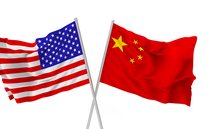Beijing has created the largest investment fund dedicated to semiconductors. Big Fund III will be able to count on capital of 47.5 billion dollars.

Promoting the development of the national chip industry and achieving self-sufficiency in a highly strategic sector: it is for these reasons that China has created the largest investment fund dedicated to semiconductors. A fund, the third of its kind and known as Big Fund III, which will be able to count on a share capital of 344 billion yuan (47.5 billion dollars).
The Asian giant’s latest investment vehicle underlines the renewed push by the Chinese government to build its semiconductor industry at a very delicate moment. And that is while tensions with the United States increase week after week.
The Biden administration imposed sweeping restrictions on China’s ability to purchase advanced chips and chip-making equipment and that Washington is now urging its allies – including the Netherlands, Germany, South Korea, and Japan – to do almost the same.
Soon after the fund’s announcement, shares of major Chinese chip company stocks skyrocketed. Those of Semiconductor Manufacturing International Corp., the largest chipmaker in China, grew to 8.1%, while those of Hua Hong Semiconductor Ltd. crossed the 10% mark.
China’s super fund
The third phase of the China Integrated Circuit Industry Investment Fund, coinciding with Big Fund III, was officially established on May 24. Among the shareholders of the latest fund, we find the Chinese Ministry of Finance, the largest shareholder with a 17% stake and a paid-up capital of 60 billion yuan, and China Development Bank Capital, the second largest shareholder with a share of 10.5%.
Investors include seventeen entities, including five large Chinese banks: Industrial and Commercial Bank of China, China Construction Bank, Agricultural Bank of China, Bank of China, and Bank of Communications, each contributing approximately 6 % of total capital.
The first phase of this maxi fund was established in 2014 with a registered capital of 138.7 billion yuan, while the second phase kicked off in 2019 with 204 billion yuan. The Big Fund has provided financing to China’s two largest chip foundries, Semiconductor Manufacturing International and Hua Hong Semiconductor, as well as Yangtze Memory Technologies, a flash memory maker, as well as several smaller companies and funds. One of the main sectors on which the fund’s third phase will focus is chip production equipment.
Chinese Chips
As Cnn explained, these investments aim to bring China’s semiconductor industry up to international standards by 2030. The money will be diverted into chip manufacturing, design, equipment, and materials.
Of course, in recent years the "Grande Fondo" has been hit by scandals corruption. In 2022, the country’s anti-corruption watchdog launched a crackdown on the semiconductor industry, shining a spotlight on some of China’s most senior figures at state-owned chip companies. A recent example? Lu Jun, former CEO of Sino IC Capital, and head of the management of the "Great Fund", ended up under the ax of justice last March.
Then there is the American variable to keep in mind. In October 2022, the United States enacted a broad set of export controls that prohibit Chinese companies from purchasing advanced chips and chip-making equipment without licenses issued by American authorities.
From this point of view, therefore, the new chip fund is not just a defensive move to counter Western sanctions; it is also – and above all – part of Xi’s ambitions to make China a global leader in technology. The challenge between the two global powers is ready to come to life.
Original article published on Money.it Italy 2024-06-01 07:00:00. Original title: Obiettivo autoresilienza: la Cina crea un fondo chip da 47,5 miliardi di dollari





